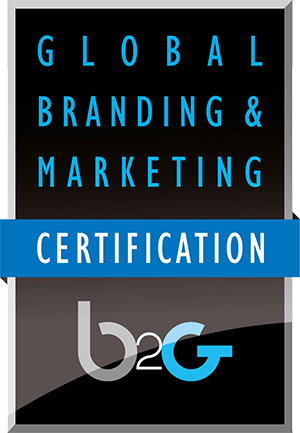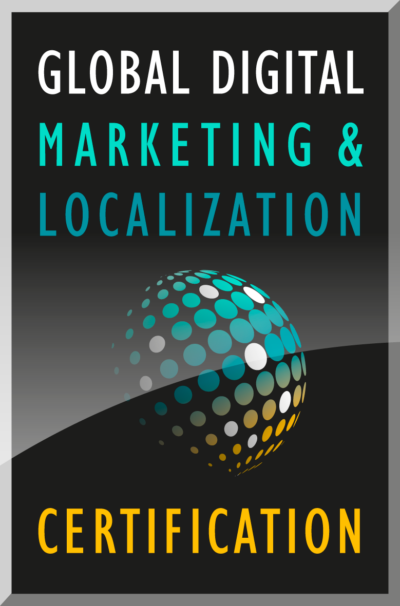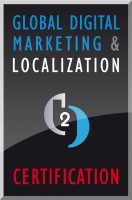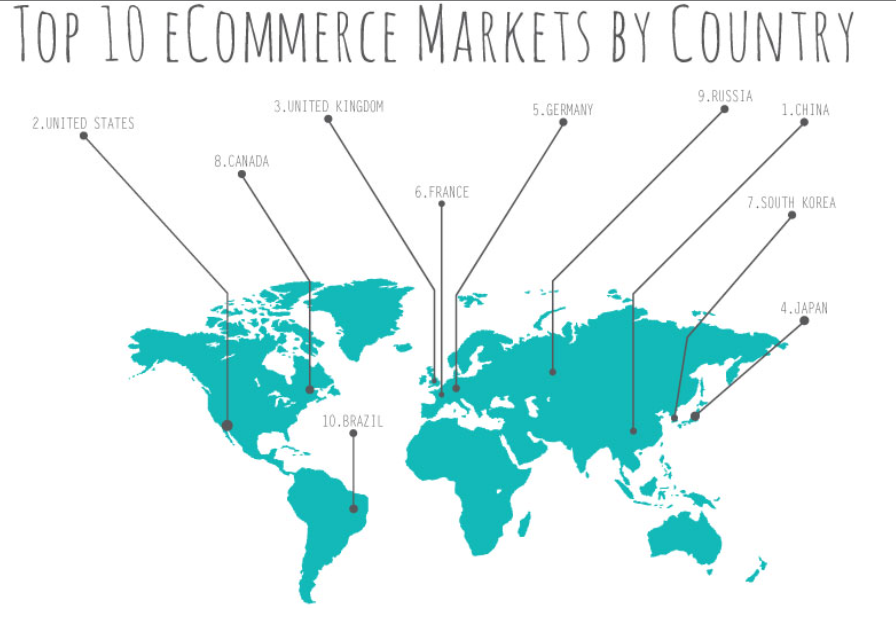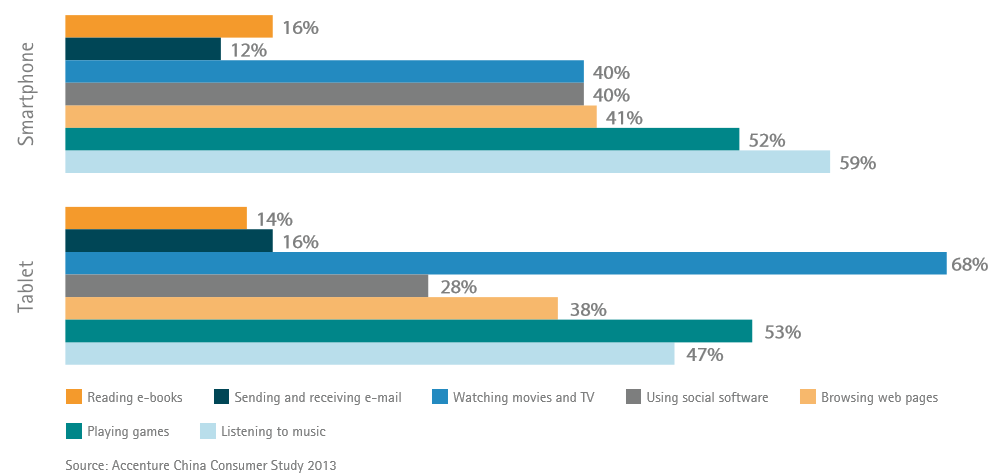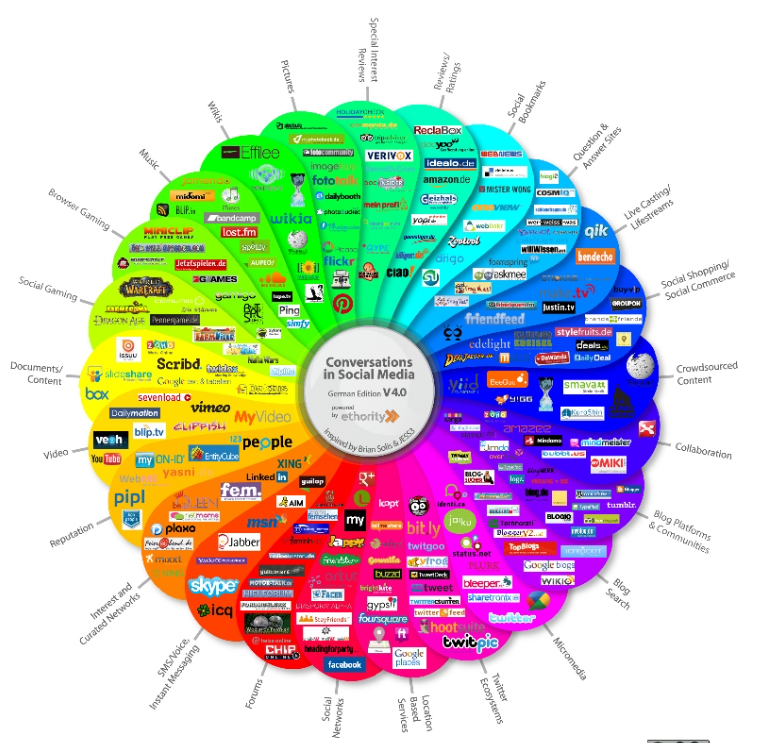This is the final paper presented by Geraldine Trefethen, a recent graduate of the Global Digital Marketing and Localization Certification (GDMLC) program. This paper presents the work being produced by students of The Localization Institute’s Global Digital Marketing and Localization Certificate program. The contents of this Paper are presented to create discussion in the global marketing industry on this topic; the contents of this paper are not to be considered an adopted standard of any kind. This does not represent the official position of Brand2Global Conference, The Localization Institute, or the author’s organization.
When an organization has launched a product or service within a market, and is successfully connecting and growing within that market, the next challenge may be, “how do I expand my reach and grow my brand into new markets, and make my product global from an online perspective”.
Exploring how to approach a globalization or internationalization strategy for companies that do not know what markets to approach next, is always a challenge. The challenge is when an organization has not yet decided what the next market is, if it is the Spanish, French and Italian market, or know what the best avenues to launch digitally are. The organization may not know what channels to launch in, if they should be website with viral videos, social media promotions or a monthly email blast.
Digital globalization strategy involves many steps from reviewing data, providing and seeking insights and consequentially, the strategy used to identify the next market to launch to and the methods to launch with. The discussion will focus on two main areas of priority, when carrying out global reach analysis, that will enable you to launch to your first market.
Coca Cola is discussed as an example to illustrate how a company can successfully launch to new markets, but can also fail due to not employing the right level of research. Based on the insights gained from Coca Cola and supplementary analysis completed, discussion will be based on the “going global” approach in two main areas, Market Research and validation of research with a local community.
Before progressing the methods of approaching a globalization strategy, one should review the definition of globalization, to ensure the challenge of launching a Global Digital Strategy is understood. When one researches the term “globalization”, you are given definitions that talk about making a product or service available or relevant in a local market. You then have the terms such as “glocalization”, which is adaptation of products or messaging in local markets, so they the brand can be successful. In addition, as discussed by Ishisha and Miller,one can also look at the definition of internationalization. Internationalization is the design and development of a product, application or document content that enables easy localization for target audiences that vary in culture, region, or language.
Both globalization, localization and internationalization speak to adapting a product, and the message about the product, addressing if it’s going to work well in that market or either focusing on the dilution of the message so that it appeals to all target markets.
It is important to address the challenge of investigating the research that goes into picking the specific market as the next market to launch into, and how to approach that research. Also, one must remember that even if we spend a large amount of time and money on research, the product may not necessarily work exactly how it did in the original market, and that some level of adaption of the product may have to happen due to buyer behavior, methods or purchasing or personas in that market. Once the product adaption has taken place or packaging of the product, the messaging will most likely have to change or be altered in some way. Taking this into consideration, the importance of validating the messaging and probability of successful launch is important before investing into launching into a new market.
“Going Global” Approach
Global Digital Marketing strategy should involve the linking of market research strategies, globalization strategies, internationalization strategies and translation services.
Before you launch into spending time researching market trends, developing a content strategy or reaching to a localization vendor, you should document the goals of launching into a new market.
- Document the goals of going global, before investing into research.
- What is the number one goal that I am trying to achieve by launching into a new market?
- Are you growing into a new market to grow revenue, if so, what is that revenue number, and what is that number based on? Is there a year 1, month 1 number, and how does that number progress month on month, year on year?
- Are you planning to take business away from a competitor? If so, how much and over what period?
- Do you want to remain consistent with your brand globally?
- Do you want to just be an e-commerce site or do you want to exist as a company within a region?
- Build a research team to focus on the investigation of the viability of moving into a new market.
Build a team that:
- Knows global digital strategy. Ensure you have someone on the team that has international experience, who understands the nuances between cultures, the importance of adaption of messaging for local market, and what channels are best for each market.
- Knows finance. Ensure you have a finance person that can ensure that consider the cost of internationalization, and the profit and loss spreadsheets for launching and retaining users for that market.
- Knows the local market. It would be ideal to have a network of people in the countries that you are thinking about launching in who can speak the language, and know the economic environment. Someone that not only knows the economic environment locally, but would be aware of the legal challenges when launching into that specific market.
- Knows how to build content. Do you have access to a creative team within that region to test out your messaging, before you invest heavily in expensive full time resources?
- Crunch the numbers
When doing market research, one should look at it from a top down perspective. Start with the basics in terms of reviewing the top economic markets in the world, demographics of those market, known barriers to entry that would prevent you from launching to that market. What are customers going to pay for my product in that market.
- What is the population of the market of choice?
- Looking at the demographics of that market. What is most of the market made up of, Millennials, baby boomers?
- Look at revenue numbers for products sold in the market your company does exist in.
- Can you get access to competitor sales figures?
- What can you charge for your product or service in that market? What profit will you make in that market?
- What data exists around consumer behavior in the market you want to gain access to?
- Validate the research with the local market.
We have seen many companies fail, as they launch in a region and they didn’t do their research on the local market first, and what the nuances in the product or perception of the product might be. If we take the company Gerber as an example. Gerber is a manufacturer of baby food. Gerber used pictures of babies faces on their labelling of their baby food. This horrified parents in Africa, because in Africa the food that is inside of the jar, is normally shown on the label on the outside of the jar. Investigation into research and product testing into the cultural differences could have gone a long way, before Gerber invested in the production and advertising of baby food in that market. This mistake also eludes to the fact that the messaging was not actually developed in the local market, and was probably developed in the US.
We all know that behavior between every single individual is different. We know Digital behavior is different between Millennials, Baby Boomers and Generation X. Outside of the differences between ages, add in the complexity of appealing to each type of generation, demographic for different markets.
In a recent discussion, analyzing the top 10 ecommerce markets in the World, Bollinger discussed the approach to launching a product or service globally. One should look at the statistics on the largest markets in terms of population and economy. As show in Figure 1 and as highlighted by Bollinger, the largest markets in the world as of a study in 2014 shows that China, USA, UK, Japan, Germany, France, South Korea, Canada, Russia, and Brazil are the biggest e-economic players.
Figure 1 – Top 10 Ecommerce Markets in the World, Top 10 eCommerce Markets by Country, 2015. W3C
The Chinese Market
In a report developed by Accenture in 2014, Accenture documented that 1,384,710,269 people live in China. Within this market, there is a wide blend of dialectics that exist with the Chinese market. There are at least 7 different dialects spoken which fall into 2 main groups, Traditional and Simplified Chinese. When exploring China as a market to enter, you should realize that launching a website in just one language may not cover the reach that you expected achieve.
In the Accenture report, it was highlighted that the Chinese market has grown hugely over the last few years. In 2010, there were 80 million smartphones in circulation. This figure increased to 580 million units in 2013, and is expected to increase to over 1 billion units by 2016.
Taking into consideration, the high presence of smartphones in China, it is critical to ensure that your content for a Chinese Market is mobile ready, and that you use responsive design techniques when designing Chinese content. As shown in Figure 2, cell phones are not only used to access email or connect with friends. A large percentage of the Chinese market, use smartphones and tablets to listen to music, play games and match movies.
Outside of ensuring your content is in the right language, you should also ensure the content is quickly discoverable with SEO and Social Marketing best practices. In China, Baidu is the major player in terms of a search engine, which operates very differently than Google or Bing. For instance, paying for ranks is the most common way to increase your visibility. Unlike in Google, it is more difficult to rank without payment in Baidu. You should do your research and investigate how this would impact the design of your Chinese content, and how to ensure your content ranks first before you competitors.
An increasingly more complex issue in China is the governmental restrictions on censorship of web content. Outside of there being differences in behavior and different entry points and channels between markets, one could also discuss the political restrictions that a government applies that make entering a new market more difficult. A cultural advisor is critical when trying to breach the Chinese market.
Did you know that China bans the use of most popular social media tools such as Facebook and Twitter? If you are doing paid advertising, it is important to be aware that tools such as Sina and Weibo (Twitter in China) are the tools to gain access to. Looking at the figure below, you will see that 40% of the usage of mobile app’s is for social activity, so you are missing out on the opportunity to connect with your consumers if you don’t have a social presence in China.
Figure 2 – Mobile device application use in China, The Digital lives of a Chinese Consumer, 2014 (Accenture report)
While it may sometimes feel that China is overburdened with marketing restrictions, the payoff of focusing on this market as they are one of the richest countries in the world with a large population of tech savvy users and can have a high return on investment.
The German Market
Reviewing population figures for Germany in 2016, there were 80 million people. As Germany is one of the top markets of the world, one should ensure to focus on the research into the consumer behavior and trends, as they vary from the Chinese or American consumer behaviors. German consumers are accustomed to purchasing via catalogs and are becoming more receptive to shopping online. Price and quality are considered the most important factors guiding decision-making, and are less concerned of the gratification received from posting to social platforms. Looking the report completed by Sanders, to ensure your content is discoverable, one should be aware that Google is the highest used search engine, with owning 94% of market share in Germany.
Business in Germany are realizing that social media is increasingly important to their success, in terms of customer service. A recent study undertaken by for BITKOM discussed on the business culture site, indicates that nearly half of all businesses in Germany use social media and another 15% are planning to use it. Below in Figure 3, you will see the many types of social platform that exist in Germany, to manage both the conversation and the community.
Figure 3 – Social Media Platforms in Germany, Social Media Culture, 2-14 (The Business Culture)
It is critical to understand that all behaviors in every market are different because of cultural behavioral differences, progression of that economic markets, access to the web, perception based on competitors and legal implications of consuming content or purchasing products or services. If one has a product that performs well in one market, investigate why it performs in that market. Is it since because I am selling Guinness in Ireland, and the Irish culture is to consume large amounts of alcohol, or is it that Starbucks coffee successful sells in Seattle as there is a coffee culture? Companies need to be very careful to not assume the same behaviors and cultures exist within the same groups, and you may have immediate product failure. One would have to ask oneself, how Guinness and Starbucks originally became successful? The product launched successfully at one point in time, so what was the first marketing campaign for Guinness or Starbucks?
To succeed within a local market, after all the research is done, one should ensure you have people on the ground in country that can give you real feedback on product, and ensure you select groups of users from your target audience, but also the audience so could become an anti-sponsor, or an advocate, not necessarily a user, and target those users or else have a channel that can handle that messaging.
Although, data is the place to start in terms of doing your research, it is critical to invest in analysis of the local market with the audience that you are targeting. Ensure you partner with an organization that can leverage people within market to validate your assumptions, and test your products and services.
Coca Global launch successes and failures
An example of a brand who has achieved successful globalization of their brand is, Coca Cola. Coca Cola is one of the most globally successful international companies, achieving 80 percent of its sales from outside the U.S. In a 2012 article, Hebblethwaite discusses the countries that have been successfully with selling Coca cola, but also addresses those countries that don’t sell the product for a varied amount of reasons. Hebblethwaite explored the idea of “It has always been about the American dream,” and it is the same for a large amount foreign countries, most consumers like this idealization.
One example of where Coca Cola used market research, but failed to distill and analyze and marketize the product well, was in the mid 80’s. They carried out 200,000 blind product taste tests in the United States, and more than one-half of the participants favored New Coke over both the original formula and Pepsi. They launched the New Coke, and it was a huge failure as they didn’t take into the more emotional side of the relationship that people had with the original coke. People don’t like change, especially when there is a big positive association with the original brand.
Using an example of where Coca Cola tried to expand globally was where they introduced the drink to top Soviet general, Georgy Zhukov. Zhukov asked if a special, colorless version, one that looked like vodka could be made, and Coca-Cola agreed, showing their appreciation and understanding of the local preferences.
Looking at this from the opposite end of the scale, it was the French who first coined term “coca-colonization” in the 1950s. Trucks were overturned and bottles smashed, as protesters saw the drink as a threat to French society. Whereas, when the Berlin Wall fell in 1989, many East Germans bought Coca-Cola by the crate-load, “Drinking Coca-Cola became a symbol of freedom.”
The company has people that focus heavily on understanding the consumers in each market, but also people locally and globally who understand the economic environment. If you are a small organization, you may not have a presence within these markets, nor have the budget for resources that understand the market environment for your product. It is important to partner with companies that not only have the local presence in your markets of choice to provide the insight, and feedback on your products and services, but also the awareness of the global consumer environment.
Once you have done your market research, and understand the local consumer behavior, and know that there is a profitable business for your product in that market, one should start thinking about researching your launch strategy before you develop any digital content. It is important to have awareness of the digital environment among your countries, and the community and ambassadors for your product.
Once you have validated that the market of choice is the right market to go into, there is a series of steps you should research before investing budget into launching into that market.
Steps to consider when launching and selling to a global market:
- Be clear on your brand strategy
- Do you want your message to be the same or different in local countries?
- Try out the alteration or adaption of this message in the market of choice, before investing into a large launch.
- Develop a pilot or soft launch
- Test out your content locally before doing a big bang approach.
- Create a community to engage with to test your ideas and content.
- Use the local network
- Leverage the local community to not only test your products or services, but ask them be advocates of your brand.
- Incentive advocacy
- No matter what the product or service is, someone in the industry is recognized as a thought leader in the space. Tap into that group and ensure they become advocates of your brand.
- Maintaining Global Content
- Hire Good Creative and Design Talent – Consumers are becoming smart and savvy, and you can lose a consumer in an instant with a bad user experience, a broken link, a spinning video or a pixelated graphic
- Experience Management – If you are designing a site, ensure that you design a customer journey. There needs to be investment into a flow from the moment a user hits a homepage, to the Instagram link they hit on the bottom of a page.
- Quality Translation/Transcreation – When working with a translation vendor, ensure they have brand and style guidelines, so that they understand your tone of voice of your organization. There are huge advancements in machine translation, but it is critical to understand that if a consumer knows that it is machine translation, it can be a huge put off in a certain scenario.
- Technology – It is important if you are going global to have a technology to track performance within each market. Ensure you have a tool that you can track clicks, opens of an email, how long someone is spending on a page. There are a lot of tools out there, such as Marketo, Eloqua etc. Ensure you have a tool that can host your content, and where that content is reusable.
- Discoverable Content – There is no point spending thousands of dollars on a content strategists, writers, graphic designers, if the content they develop isn’t discoverable. Ensure you employ SEO techniques and/or paid media advertising to ensure your content ranks the highest over your competitors. Ensure you have a strong domain strategy, that allows users easy navigate to your site, and either is automatically directed to their local or they can easily navigate.
- Social Strategy
- Ever organization including B2B customers should have a social strategy. There is a perception out there from people who are not digital savvy, that social media is Facebook and Twitter. Social Media is growing it’s reach as is being used for customer services, research is terms of consumer listening, direct selling, and people are forming real online lives through social communities.
- Mobile Strategy
- If your site is designed for a mobile audience, you will find it hard to compete in a global nature. Ensure you know the basics around designing responsive design content, content that can adapt to any type of mobile device without constant scrolling up and down.
- Constantly Research and develop new content …Rinse and Repeat
- Consumers are getting smart. They need to see new content, new videos, and new experiences all the time. Ensure to “rinse and repeat” the steps discussed in the research stage regularly. Behaviors change overnight, Google change algorithms on their search engine all the time. You need to have someone on your team that knows the global digital environment and how it changes regularly.
Conclusion
The challenge of going global is a true challenge as it involves varied level of opinions, many options of consultants and companies to use, many channels to leverage and levels of content and many dialectics of languages to consider. Where many organizations have failed is missing the two key steps that have been discussed, market research and validation of how to enter this market with the local community.
Looking back, we see that research is not only market research around population and demographics, but detailed research in terms of consumer behavior in that market. As well as consumer behavior, it is critical to research the legal, political and technology barriers to entry and how you overcome these and launch a successful and profitable product or service.
Once your team has validated this is question, leveraging the local market resources to validate your launch strategy and continual success in this market is crucial as you grow and evolve.
References:
1. Ishida Richard, Miller, Susan K, Localization vs. Internationalization, W3C, 2015, Web. 24th November 2016, http://www.w3.org/International/questions/qa-i18n.en
2. Bollinger Isaiah, Top 10 eCommerce Markets by Country, Trellis, 2015, Web. 24th November 2016, https://trellis.co/blog/top-10-ecommerce-markets-by-country.
3. Accenture Report, The Digital Life of Chinese Consumers, Accenture, 2014, Web. 24th November 2016, https://www.accenture.com/t20150523T022409__w__/us-en/_acnmedia/Accenture/Conversion-Assets/DotCom/Documents/Global/PDF/Dualpub_1/Accenture-China-Consumer-Insights.pdf
5. Social Media Guide, The Business Culture, 2014, Web. 24th November 2016, http://businessculture.org/western-europe/business-culture-in-germany/social-media-guide-for-germany/
6. Hebblethwaite, Cordelia, Who, What, Why: In which countries is Coca-Cola not sold?, 2012, Web. 24th November 2016, http://www.bbc.com/news/magazine-19550067
Copyright © 2016 The Localization Institute. All rights reserved. This document and translations of it may be copied and furnished to others, and derivative works that comment on or otherwise explain it or assist in its implementation may be prepared, copied, published, and distributed, in whole or in part, without restriction of any kind, provided that the above copyright notice and this section are included on all such copies and derivative works. However, this document itself may not be modified in any way, including by removing the copyright notice or references to The Localization Institute, without the permission of the copyright owners. This document and the information contained herein is provided on an “AS IS” basis and THE LOCALIZATION INSTITUTE DISCLAIMS ALL WARRANTIES, EXPRESS OR IMPLIED, INCLUDING BUT NOT LIMITED TO ANY WARRANTY THAT THE USE OF THE INFORMATION HEREIN WILL NOT INFRINGE ANY OWNERSHIP RIGHTS OR ANY IMPLIED WARRANTIES OF MERCHANTABILITY OR FITNESS FOR A PARTICULAR PURPOSE.
Author Bio:
 Geraldine Trefethen was born in Ireland and moved to Seattle in 2012 to grow her career in Digital Marketing. Geraldine is the Director of Global Digital Marketing Operations for Lionbridge, and heads up a team of Digital and Localization Program Managers and Subject Matters Experts in the Global Digital Content space.With a passion for leadership and Digital Marketing, Geraldine runs a team that focuses on assisting her customers with expanding into new Markets and helping them decide on the right content and the right channels for each market.
Geraldine Trefethen was born in Ireland and moved to Seattle in 2012 to grow her career in Digital Marketing. Geraldine is the Director of Global Digital Marketing Operations for Lionbridge, and heads up a team of Digital and Localization Program Managers and Subject Matters Experts in the Global Digital Content space.With a passion for leadership and Digital Marketing, Geraldine runs a team that focuses on assisting her customers with expanding into new Markets and helping them decide on the right content and the right channels for each market.
With a Masters in Computers Science in Knowledge Management, a Diploma in Multimedia development and post grad in Project Management, Geraldine really wanted to work with Brand2Global on amplifying her credentials in the Digital Marketing Space. With over 12 years of industry experience in Marketing and Program Management, Geraldine has grown a true passion for helping others both from a mentorship and problem solving perspective.
For fun Geraldine enjoys skiing, socializing as every Irish person does, and meeting new people.


